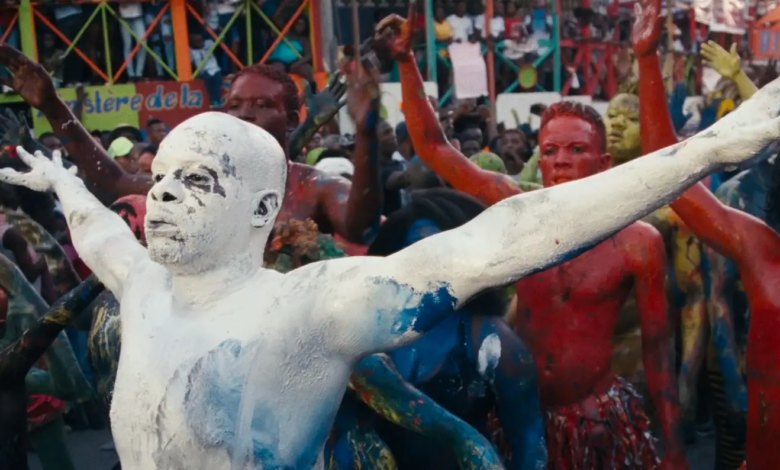KITE ZO A (Leave the Bones) by Director/cinematographer/editor Kaveh Nabatian (Sin La Habana, The Seven Last Words), world premiered at Montreal Festival du Nouveau Cinéma, where it bowed in the International Panorama section and won Best Feature Film, held its international premiere at the SXSW Film & Television Festival, and went on to play the Miami Film Festival, DOXA Documentary Film Festival, and Toronto ReelWorld Film Festival, where Nabatian took home the Standout Cinematographer Feature Award. KITE ZO A (Leave the Bones) had its New York Premiere at Rooftop Films this past weekend at Brower Park.
About the film: In 1791, in Haiti, Dutty Boukman presided over a Vodou ritual in Bois-Caïman that led to the creation of the first Black republic. Since then, practices of transformation and artistic expression have been at the core of a thriving culture as the country faces foreign oppression, poverty, and natural disasters. “Kite Zo A” is a sensory film about rituals in Haiti, from ancient to modern, made in collaboration with poets, dancers, musicians, fishermen, daredevil rollerbladers, and Vodou priests, set to poetry by Wood-Jerry Gabriel.
At the SXSW Film & Television Festival this past March, the film was in the Global category as a documentary. When we view documentaries, we often hear from various interview subjects who provide input or opinions on the film’s topic. There are no people in suits in this film. Instead, the film contains interviews with the country’s people in different professions – a police officer, a teacher – and various other residents who talk about life there. The narration is by poet Wood-Jerry Gabriel.
The cinematography by this filmmaker captures the landscape and scenery of the country and various performers. A woman dressed in white dances in this film, and his cinematography is spectacular. When it comes to the water scenes, it is not just the surfers but those who are on the water, rowing, and he captures the movement of the paddle and the waves. Those individuals who have secured rollerblades take to the streets to ride alongside a truck or other methods of rolling along. The people share their joy in doing things that help them live daily, from the jobs they have to do and the circumstances their country is in.
There are scenes of various religious ceremonies and spiritual practices, including Vodou. One person states that Vodou is a culture for them.
The latter part of the film features individuals preparing for the annual Mardi Gras celebration, with people painting themselves/others and wearing different attire to celebrate as musicians perform in the street. The film is 70 minutes long and is recommended to watch and hear from the people.
Source: Rooftop Films, SXSW
